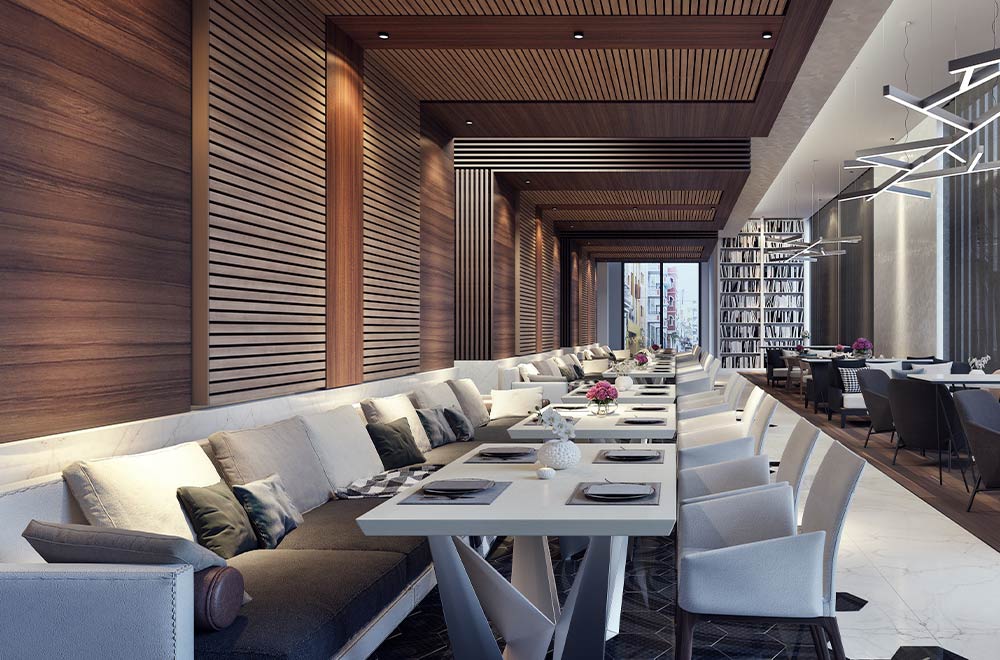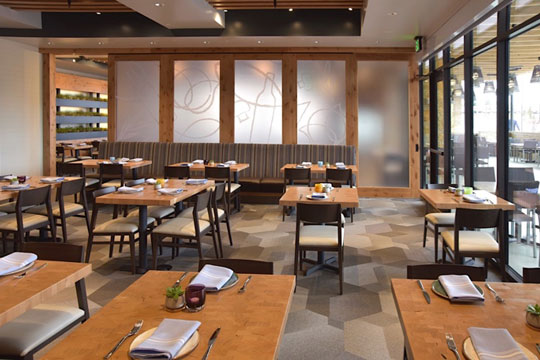Asian Restaurant ISB: A Must-Try Place for Food Lovers in Islamabad
Asian Restaurant ISB: A Must-Try Place for Food Lovers in Islamabad
Blog Article
Savor Authentic Oriental Cuisine With a Pan-Asian Spin for a Culinary Journey
Embarking on a cooking trip with authentic Asian food, boosted with a Pan-Asian spin, offers a distinct chance to explore the rich tapestry of tastes that define the region's diverse culinary customs. This experience invites you to savor the beautiful balance of preferences-- pleasant, salted, spicy, and sour-- integrated by aromatic natural herbs and spices. Imagine the cutting-edge blend of Thai curry and ramen or the unanticipated delight of sushi burritos. As you consider these luring dishes, think about the cultural narratives and historical influences that shape them, each bite providing a story waiting to be uncovered.

Discovering Pan-Asian Flavors
In the world of global gastronomy, Pan-Asian cuisine stands apart for its remarkable diversity and the harmonious interaction of tastes from different Asian societies. This cooking technique commemorates the abundant traditions and special ingredients found across the continent, creating a tapestry of tastes that is both fascinating and rewarding. Secret to Pan-Asian food is its capacity to stabilize contrasting flavors-- wonderful, salted, spicy, and sour-- while highlighting the quality and high quality of each active ingredient.
From the umami-rich soy sauce of Japan to the fiery chili peppers of Thailand, Pan-Asian food uses a substantial palette of flavors. These elements are commonly incorporated in innovative means, boosting dishes with layers of intricacy. As an example, using aromatic herbs such as lemongrass and cilantro, typical in Vietnamese and Thai cuisine, adds a revitalizing brightness to dishes, while the unification of coconut milk delivers a velvety, abundant appearance.
The emphasis on fresh fruit and vegetables and fragrant flavors makes certain that each dish is not just a banquet for the taste buds but likewise for the detects. Pan-Asian food invites restaurants to get started on a culinary journey, checking out the substantial and differed landscapes of Asian gastronomy with every bite.
Combination Recipes to Attempt
While Pan-Asian cuisine is commemorated for its conventional tastes, the contemporary culinary landscape is progressively welcoming fusion meals that blend these traditional aspects with influences from other regions. This cutting-edge technique not just honors the rich heritage of Asian cookeries but also presents unique preference experiences that appeal to contemporary tastes.
An archetype of such a combination dish is the Korean-Mexican taco, where marinated bulgogi beef is covered in a cozy tortilla, covered with kimchi and a zesty gochujang-infused salsa. This combination marries the strong, full-flavored flavors of Korea with the lively, fresh aspects of Mexican food. Similarly, sushi burritos have actually acquired popularity, integrating the delicate creativity of Japanese sushi with the hearty, hand-held comfort of a burrito, commonly including combination ingredients like tempura shrimp and avocado with a drizzle of wasabi mayo.
Another significant meal is Thai curry ramen, which instills the creamy, fragrant seasonings of Thai curry into the calming broth of conventional Japanese ramen, developing a harmonious blend that tantalizes the senses. These fusion recipes extend past mere uniqueness; they represent a culinary discussion in between societies, urging expedition and innovation worldwide of Pan-Asian food.
Necessary Components and Spices
To truly value Pan-Asian cuisine, one need to understand the necessary ingredients and seasonings that create its foundation. This varied culinary style attracts from a rich tapestry of Oriental customs, using a harmonious blend of flavors and appearances. Trick active ingredients consist of soy sauce, fish sauce, and oyster sauce, which give a savory umami deepness vital to Oriental recipes. Corresponding to these are rice vinegar and mirin, providing a delicate acidity and sweet taste.
Fragrant components are crucial, with ginger, lemongrass, and garlic being common throughout various Pan-Asian dishes. These ingredients provide a great smelling base that boosts the complexity of flavors. Flavors such as star anise, cardamom, and cinnamon present warmth and personality, resembling impacts from areas like China and India.

Food Preparation Methods and Tips
Mastering the art of Pan-Asian cuisine requires familiarity with its distinctive food preparation strategies, each adding to the dynamic tapestry of flavors this culinary tradition is commemorated for. Central to these methods is the stir-fry, a fast cooking strategy that preserves click to read more the dietary stability and vibrant colors of ingredients. Making use of a wok, the stir-fry method enables even warmth circulation, necessary for attaining the characteristic appearance and taste equilibrium of Pan-Asian meals.
One more essential method is steaming, especially common in Chinese cuisine. This gentle method maintains the all-natural flavors and nutrients click this of ingredients, making it suitable for fish and shellfish and veggies. Dumplings, a cherished staple, usually take advantage of steaming, resulting in soft, succulent appearances.
Grilling, also indispensable, passes on great smoky midsts to recipes such as Oriental bulgogi or Japanese yakitori (pan asian restaurant Islamabad). This technique commonly includes marinating components, permitting tastes to penetrate deeply before cooking over an open fire or warm plate
Finally, mastering the art of stabilizing tastes-- sweet, sour, salted, bitter, and umami-- is important. Correctly layering these aspects can boost a dish from average to phenomenal, providing a facility and pleasing culinary experience that embodies the significance of Pan-Asian food.
Eating Experiences Worldwide
Around the world, Pan-Asian food provides an unparalleled eating experience, celebrated for its abundant tapestry of tastes and dynamic discussions. This culinary phenomenon has gone beyond social boundaries, capturing the hearts and palates of food lovers worldwide. In multicultural cities fresh York, London, and Sydney, Pan-Asian dining establishments work as melting pots where cooking customs from Thailand, Japan, China, and beyond merge, supplying diners with an eclectic mix of dishes that highlight the region's diversity.
The worldwide appeal of Pan-Asian food depends on its ability to provide both credibility and development. Chefs masterfully marry standard components such as lemongrass, soy sauce, and miso with modern strategies, resulting in recipes that are both refreshingly brand-new and familiar. This combination allows restaurants to start a culinary trip that values heritage while embracing modernity.
Additionally, eating experiences are raised via attentively created atmospheres that show the principles of Pan-Asian aesthetics. From minimal Japanese-inspired insides to vibrant Thai-themed spaces, each restaurant offers a distinct setting that enhances the cooking offerings. Consequently, clients are not just eating a dish yet partaking in a cultural experience, making Pan-Asian dining a really international sensation.
Final Thought
The expedition of Pan-Asian cuisine provides a profound understanding of the detailed interaction of tastes and culinary practices across Asia. By accepting fusion meals such as Thai curry ramen and sushi burritos, the culinary journey not only highlights the adaptability of conventional active ingredients yet likewise showcases cutting-edge contemporary techniques. This gastronomic journey, enriched by cooking approaches and crucial spices, provides a distinct opportunity to value the social diversity go now and culinary virtuosity that specify Pan-Asian food on a worldwide range.
Getting started on a cooking trip via genuine Eastern food, improved with a Pan-Asian spin, uses an unique opportunity to discover the abundant tapestry of tastes that specify the region's diverse culinary practices.In the realm of global gastronomy, Pan-Asian food stands out for its remarkable variety and the harmonious interaction of tastes from numerous Asian cultures. Trick to Pan-Asian food is its ability to balance contrasting flavors-- sweet, salted, spicy, and sour-- while highlighting the freshness and quality of each ingredient.

Report this page